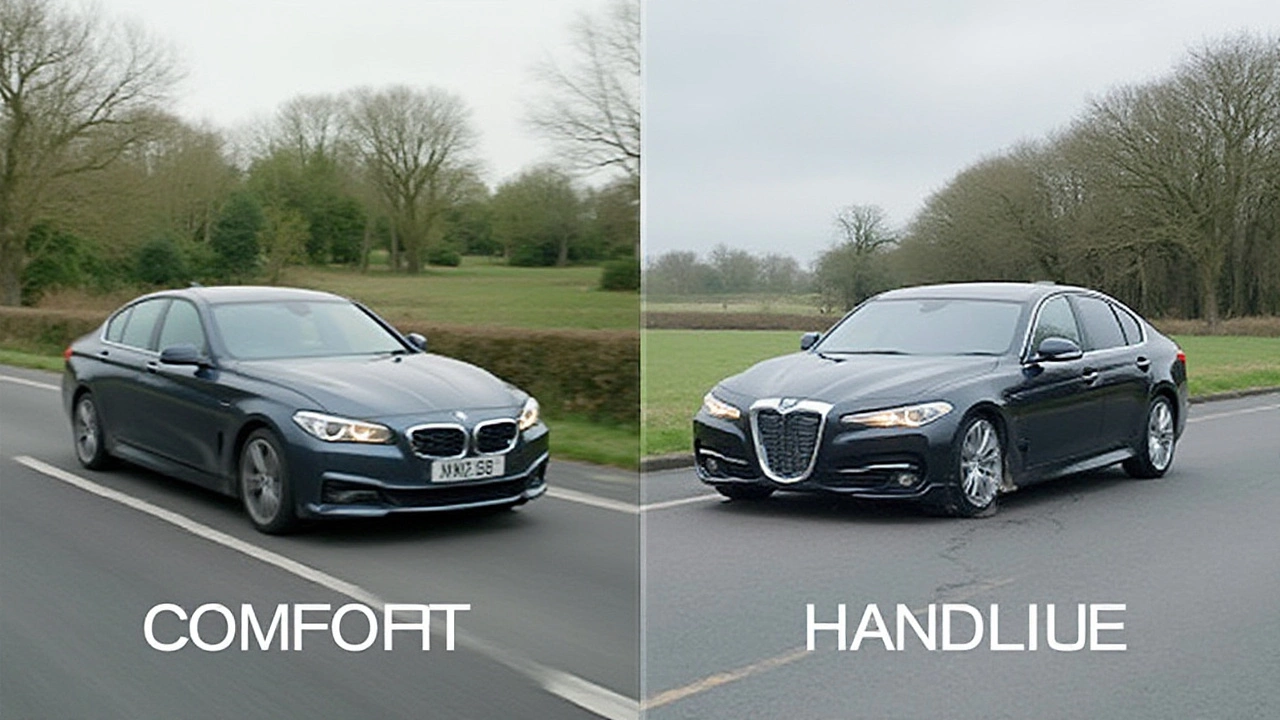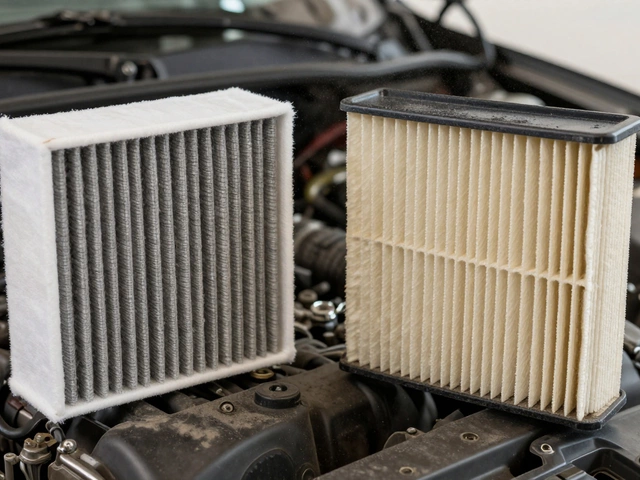You see that car ahead—they're hugging the asphalt, looking sharp, riding low, and maybe you wonder if that's just for car shows and weekend warriors. But what if you want that look and that corner-carving feel in your daily driver? Here’s the thing: dropping your car on lowering springs isn’t just an aesthetic choice. It messes with almost every aspect of how your daily ride feels, handles, and ages. Are those stiffer, shorter coils worth it for everyday commutes, grocery runs, pothole dodging, and family duty?
What Lowering Springs Actually Do
Lowering springs, often marketed as the first performance mod anyone should do, swap out your stock springs for ones that are shorter and sometimes stiffer. The idea is simple: a lower car means your center of gravity drops, so when you turn fast, the car leans less. The result? You potentially get sharper handling with less body roll. Cars like the Volkswagen GTI or Subaru WRX get even more slot-car fun with a good set of lowering springs—if you choose them right.
But stock suspension is designed for a balance of comfort and control. When you change spring height and rate, you're changing a lot more than just looks. Your shocks have to work harder—stock dampers, for instance, aren’t designed for such little suspension travel. Expect a stiffer, sometimes bouncier ride, especially on rough or broken pavement. If your commute is all smooth highway, you might hardly notice, but if you live somewhere with potholes the size of small planets, you’ll feel every one.
If you’re looking for cold, hard data, Honda engineers say standard civic ride height is set for curb clearance of 6.7 inches on US models, to handle obstacles like speed bumps. Drop it by 1.5 inches with lowering springs? Suddenly you’re scraping over driveways and parking lot entrances. Plus, steering geometry like camber and toe changes as the ride height drops, which can wear tires oddly and mess with alignment. Most manufacturers recommend an alignment check after installing lowering springs. For reference, a study in "Car Tech Monthly" (2023) found a 30% increase in negative camber after a 1.5-inch drop, leading to faster inside edge tire wear.
Lowering springs usually have spring rates from 200–400 lb/inch, compared to standard springs in the 150–250 lb/inch range, which is a big leap in firmness—more noticeable on imperfect roads. So you’ve got to ask yourself: are you willing to trade some comfort for a better look and improved cornering?
Here's a quick side-by-side stat comparison to put it all in context:
| Stock Suspension | Lowered (Springs Only) | |
|---|---|---|
| Ride Height (sedan average) | 6.5–7” | 4.5–6” |
| Spring Rate (lb/in) | 170–240 | 220–380 |
| Average Ride Harshness (survey 1–10) | 3 | 6 |
| Cornering Stability | Fair | Very Good |
| Tire Wear Risk | Normal | Increased (especially inner edge) |
While the numbers look tempting if you want a sharper look and feel, keep those drawbacks on the radar. If you leave the springs paired with factory shocks for long, you might find yourself replacing worn shocks much sooner than expected.

The Ups and Downs: Real-World Daily Driving with Lowering Springs
Plenty of drivers underestimate how much their daily routes will influence the lowering experience. If you’re cruising suburban boulevards with freshly paved lanes, lowering might be painless. On the flip side, if you attack speed bumps and potholes on the regular, things can get bumpy—literally. Why? Those shorter springs mean less room for your suspension to absorb big hits, so the jolt goes right through to your seat. Some cars become notorious for bottoming out after lowering, and that's a total buzzkill on the way to work.
Then there’s the issue of scraping. It’s not just aggressive driveways or speed bumps. Underside parts like exhausts, bumpers, and oil pans are suddenly a lot closer to danger. Ever hear that awful grind when you enter a parking garage? With lowering springs, you’ll hear it more—unless you creep over at a diagonal and pray no piece of rebar is sticking up. In a 2024 driver survey, 67% of lowered car owners admitted regular scraping incidents after installation, and 31% eventually added skid plates or extra protection.
Tire wear is a less obvious but super important story. The change in angle after lowering (more negative camber, for you geometry nerds) means your tires often wear faster on the inside edge—especially if you skip a proper alignment. Toyota techs report seeing front tires worn to cords on the inside edge after just 15,000 miles for some Camrys riding too low. Rotating tires often and checking alignment religiously keeps that in check, but plan for extra maintenance costs.
Daily drivers also need to deal with stuff like winter. Snow clearance gets dicey because a lower car will plow through deep drifts rather than roll over them. And in places where salt and sand collect, the lower body can get chipped up faster from road debris kicked up by your front wheels.
Still, for the right car enthusiast, these changes are worth it. You feel more in touch with the road. You take that on-ramp with more confidence. Turning feels sharper. For cars that already have a touch of sport in their DNA, the payoff is impressive. Not every setup is created equal, though—some of the cheaper spring kits might only look good, without really improving handling or ride quality. There’s a reason why reputable brands like Eibach or H&R are consistently praised for balancing ride and performance: they carefully engineer their springs to work with your car’s stock dampers and geometry, as long as you keep the drop modest (usually no more than 1–1.5 inches for daily use).
Installation is another pain point. Spring swapping isn’t impossible for a home mechanic with the right tools and patience, but one slip and you can injure yourself badly. Most shops will charge a couple hundred bucks for labor—including alignment—but if you’re meticulous, you could DIY it in a weekend.
And yes, if you ever want to go lower than springs allow or want adjustable height, coilovers offer more flexibility, but that’s another rabbit hole with even more compromises for daily comfort. For most people who want some style and better feel without breaking the bank, springs hit the sweet spot—but only if you commit to living with the trade-offs.

Smart Choices: Surviving—and Thriving—on Lowering Springs
There is a right way to run lowering springs on your daily car, and hundreds of drivers pull it off with happy results (and no trips to the chiropractor). It comes down to being smart and realistic. First, don’t slam your car. Lowering more than 1.5 inches is asking for trouble if this isn’t a toy for weekends only. Stick to reputable brands that design springs for your specific make and model; mixing random springs with your car’s stock struts is a recipe for harshness or handling nightmares.
Focus on ride height and travel. Some cars have plenty of wheel gap to take out, others just don’t. Cars with MacPherson struts (think Subaru, Ford Focus) are more sensitive to big drops, while double wishbone setups (Honda Accord, old Lexus IS) can sometimes handle lowering springs a bit more gracefully. Forums are full of direct feedback for every platform—take advantage and learn from others’ mistakes before you buy.
Get an alignment immediately after installation—don’t skip this step. A quick settler drive (let the car settle for a few days) followed by a pro alignment shop visit is key. Most modern alignment racks can set camber, caster, and toe to factory or near-factory settings, keeping your steering precise and tire wear normal. Ask your shop if they have experience with lowered vehicles—they might have to use camber bolts or other tricks for a proper job.
If you’re planning ahead, budget for faster shock replacement, especially if your car already has miles on the odometer. Stock shocks may not like the reduced travel and higher spring rates. Bilstein and Koni make upgraded dampers that can handle the new load better and last longer, with only a mild cost increase—not mandatory, but strongly recommended. Some people run lowering springs on stock shocks for tens of thousands of miles, but others get that clunking or pogo stick ride in six months.
Watch out for load changes, too. A heavily-loaded car (kids, groceries, tools, etc.) will sit even lower with aftermarket springs. Certain springs are progressively wound to help with this, ramping up firmness as they compress more. These are worth the little extra up front. If you regularly haul heavy stuff or use your backseat a lot, ask the spring company for load charts or customer support—they usually have helpful guides.
One final tip: Take obstacles slow. Angling over speed bumps and steep driveways reduces your scraping risk and saves your underbody, exhaust, and bumper lip from battle scars. Some people add cheap rubber ramp kits or scrape guards for extra insurance.
The debate over lowering springs for daily driving isn’t going away. The mix of street cred, real functional benefits, and hard-road compromises keeps it alive. Just be realistic about your daily needs, your patience for maintenance, and your tolerance for bumps in the road—literal and otherwise. Choose smart, install right, and you can enjoy the lower life without hating your ride to work.






